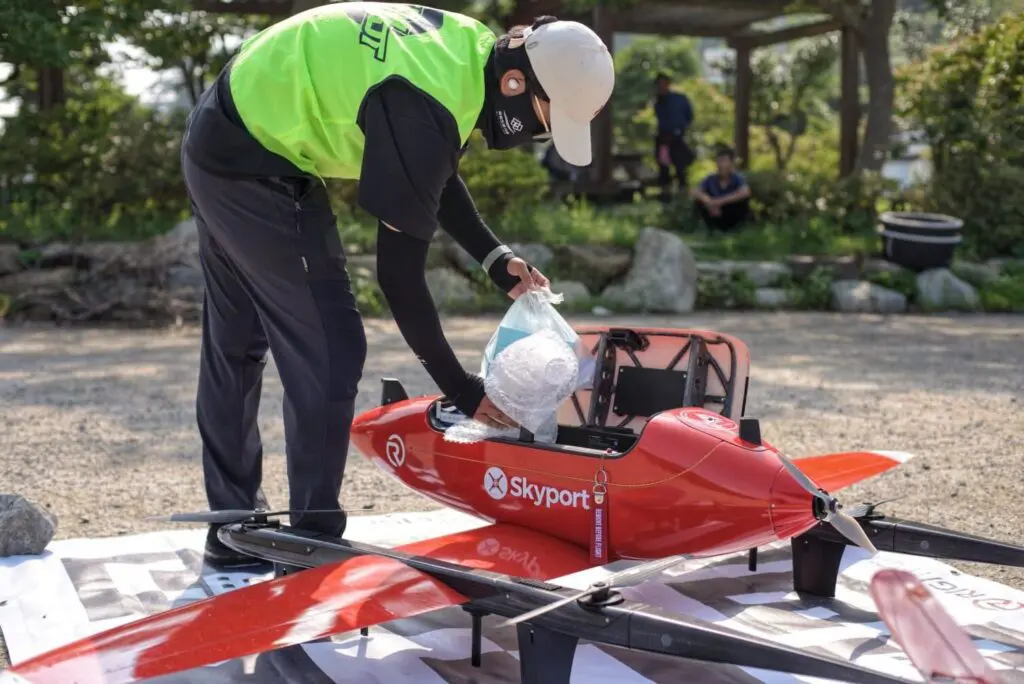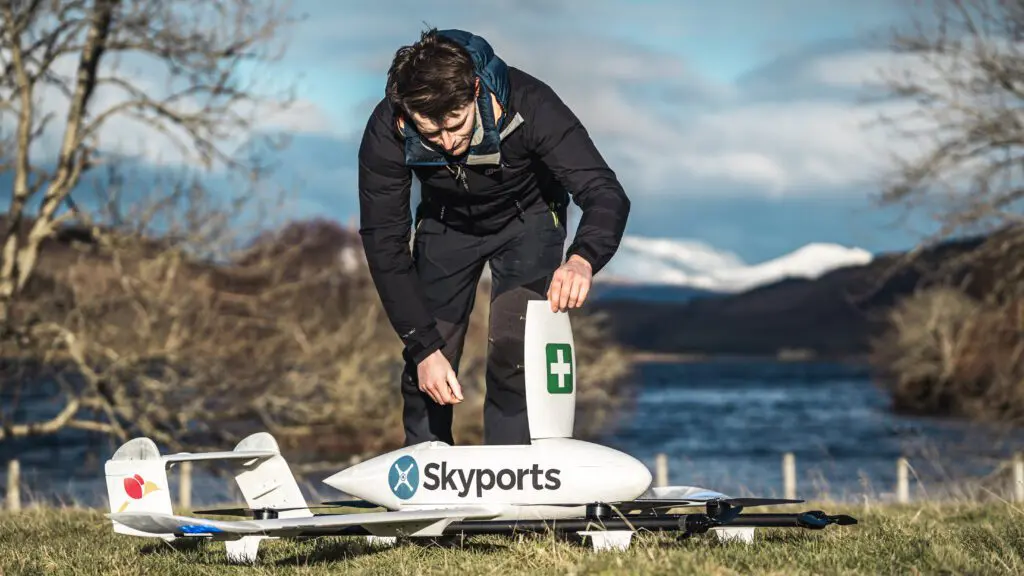March 7, 2024
Exploring middle-mile logistics with the Port Authority of New York and New Jersey

In February 2024, Skyports Drone Services (Skyports) signed a strategic partnership with the Port Authority of New York and New Jersey (“PANYNJ”) to explore middle-mile drone logistics across the Port Authority’s portfolio of transportation assets.
A bi-state public agency, the Port Authority oversees much of the NY/NJ region’s air, land, rail and maritime transportation infrastructure network, including: John F. Kennedy International Airport (JFK), LaGuardia Airport (LGA), and Newark Liberty Airport (EWR); the Port of New York and New Jersey, one of the largest and busiest port systems in North America; in addition to major tunnels and bridge crossings within the Port District, which spans a 25-mile radius around the Statue of Liberty.
In the following Q&A, Steven Spinello, Partnerships & Strategy Manager for Skyports, outlines the key parameters of this new collaboration with the PANYNJ.
Why is the PANYNJ interested in drones?
Today, approximately 90% of the 365 million tons of freight that passes through the region’s roadways, bridges, and tunnels each year is moved by trucks. In most cases, these trucks are heavy-emitting diesel-powered box trucks and semis that not only contribute the lion’s share of carbon emissions related to ground transportation, but also take up precious space on New York City’s already densely crowded streets. On a daily basis, ~180,000 truck journeys are generated from Manhattan’s 37,000 freight-related businesses, with most of those trips originating on the New Jersey side. At best, 2 out of every 3 trucks leaves the city empty (or what’s known as “deadheading”).
The PANYNJ is exploring ways to reallocate a portion of these cross-Hudson freight movements towards more sustainable modes of transport. Drone technologies can play a role in efficiently delivering time-sensitive or high-value goods to businesses, by substantially reducing the amount of time it takes for a shipment to leave a distribution facility in NJ, as an example, to arrive near its final destination in NYC, without all of the surface transportation frictions that journey typically entails (not to mention, with zero emissions).
What are the possible benefits?
At its core, middle-mile drone logistics is focused on streamlining the interconnected parts of the larger supply chain. These are the links that the end-customer does not necessarily see – for example, the warehouse, the distribution center, the satellite hub, etc. – but that are mission-critical to having people’s and businesses’ goods delivered on time and efficiently. Middle-mile drones can bolster existing logistics networks and, in some cases, replace otherwise inefficient processes with highly automated and reliable point-to-point transportation of physical goods.

What types of customers are you looking to work with?
Right now, we are focused on three verticals: (i) maritime; (ii) medical; and (iii) logistics. Each of these present their own set of challenges, however there are some very immediate applications, for example delivering high-value medical supplies to hospital networks along the East River or serving as a facilitator of precious cargo for crew stationed on anchored vessels in New York Harbor. Given that Skyports Drone Services operates a fleet of different aircraft, each with their own performance capabilities and service applications, we are open to exploring a range of different use-cases with customers across multiple industries.

What type of coordination will be required with regulatory and oversight bodies (e.g., the FAA)?
Any proof-of-concept operation will require significant coordination with relevant regulatory bodies, including obtaining the necessary waivers and/or approvals from the US Federal Aviation Administration (FAA). Airspace is a primary concern and the FAA will dictate what is allowable under certain conditions and limitations. Additionally, as part of the regulatory scoping included with the feasibility study PANYNJ/Skyports will collaborate with relevant authorities-having-jurisdiction (AHJs) including the State of New York, State of New Jersey, relevant municipalities like the City of New York, as well as pertinent governmental agencies, for example NYCDOT, NYCEDC, and the US Coast Guard. An example A-to-B route from a takeoff location in New Jersey to a landing location in New York will have cross-jurisdictional implications, and thus will require close coordination across all levels of government, including Federal, state, and municipal agencies.
What are the immediate next steps?
The most immediate next step is identifying a customer (or customers) to pressure-test the concept of drone operations in the NY/NJ region. Specifically, Skyports will work with the PANYNJ to down-select for best use cases given certain operational, technical, regulatory and commercial constraints. While middle-mile logistics is the ultimate objective, there may be alternative use-cases – for example, infrastructure inspection or maritime applications – which can serve as milestones before progressing towards more permanent operations. The key for any operation – including proof-of-concept operations – is using drone technologies to “solve” for a customer’s existing pain-points or enhance their current capabilities.
Find out more about our drone delivery work here.
Contact the team here.

